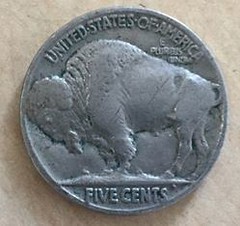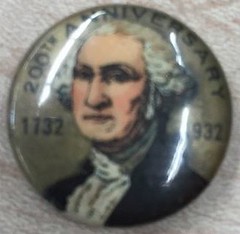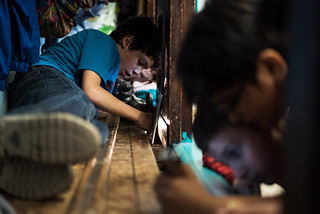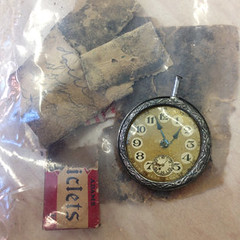
PREV ARTICLE
FULL ISSUE
PREV FULL ISSUE
KIDS EXCAVATE OLD COINS FROM A CLASSROOM CLOSET
Dennis Tucker of Whitman Publishing forwarded this neat New York Times story about kids who applied their archaeology lesson right
in their building, and came up with some interesting artifacts, including old coins. Thanks! -Editor
Bobby, an earnest 10-year-old with a mop of dark hair and saucerlike brown eyes, was bitten by the archaeology bug four or five months ago, when his class read a book about a migrant farmworker who found old coins in a field. Bobby decided he wanted to collect old coins of his own, and he had noticed a small gap between the floorboards in the closet. So he reached into that gap as far as he could and, voilà, out came a bunch of wheat pennies (minted from 1909 to 1958), a buffalo nickel and other treasures. Bobby and his best friend in the class, Lizardo Lozada, soon began reaching farther underneath the floorboards with the help of simple tools — pencils, scissors, untwisted coat hangers. “At first the other kids were like, ‘What are you doing?’ ” Bobby said one recent afternoon while demonstrating his technique. “But then they saw we were finding old, cool stuff, so they started doing it and finding cool stuff, too.”
Along the way, the students have also become adept at research (when they find something, they try to learn more about it on the web); cataloging (each object is logged on a sheet that Ms. Sicherman helped the students design); preservation (the artifacts are kept in plastic bags); and documentation (Ms. Sicherman posts photos of the artifacts on an Instagram account). And as their excavations began to yield diminishing returns, they sought out new dig sites, receiving permission to explore closets in adjacent classrooms. Ms. Sicherman has arranged for a professional archaeologist to visit the class, and there are plans for the artifacts to be displayed in some sort of exhibition, perhaps in the school’s library. The principal, Maria Velez-Clarke, said she had considered enlisting the custodial staff to remove some of the closet floorboards, which would provide easier access to whatever is still beneath them. Not everyone likes that idea. “That might be a little too easy,” Bobby said. “We’d find something every five seconds.” Other students expressed similar reservations. The thrill of the hunt is apparently a big part of the project’s appeal. That is not to say that Bobby is opposed to taking the hunt to the next level. He has asked his uncle, Robert Silver, for a metal detector. “But I told him it’s very expensive,” Mr. Silver said, “so he’ll have to wait until Christmas.” Dennis adds: Kudos to their teacher, who’s encouraging the kids to explore and to connect the treasures they find (including coins) to their school lessons! I also sent this to Dave Bowers and Whitman associate editor John McCurdy. We’re putting the finishing touches on a new QDB book—Lost and Found Coin Hoards and Treasures: Illustrated Stories of the Greatest American Troves and Their Discoveries —which will be out later this year. To read the complete article, see:
Here are a couple items from the project's Instargram posts. -Editor
 
To read the Instagram feed, see:
Wayne Homren, Editor The Numismatic Bibliomania Society is a non-profit organization promoting numismatic literature. See our web site at coinbooks.org. To submit items for publication in The E-Sylum, write to the Editor at this address: whomren@gmail.com To subscribe go to: https://my.binhost.com/lists/listinfo/esylum All Rights Reserved. NBS Home Page Contact the NBS webmaster 
|

